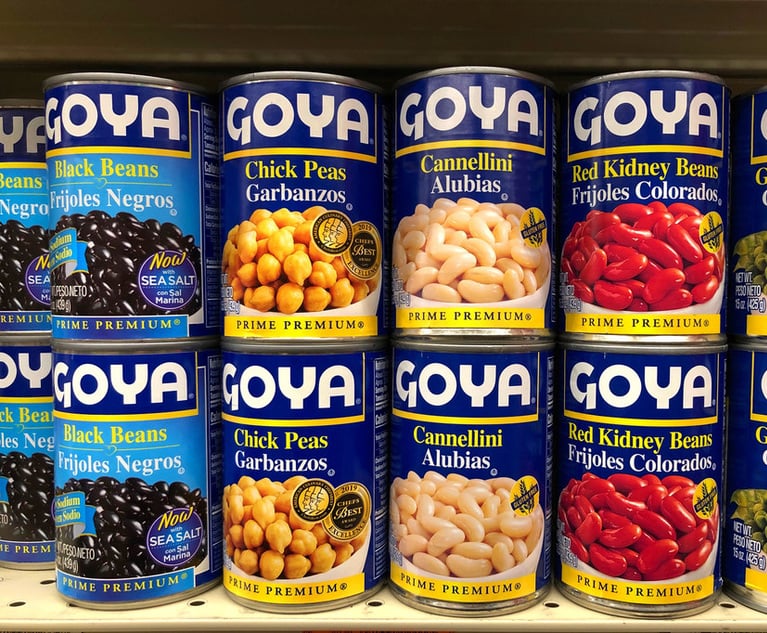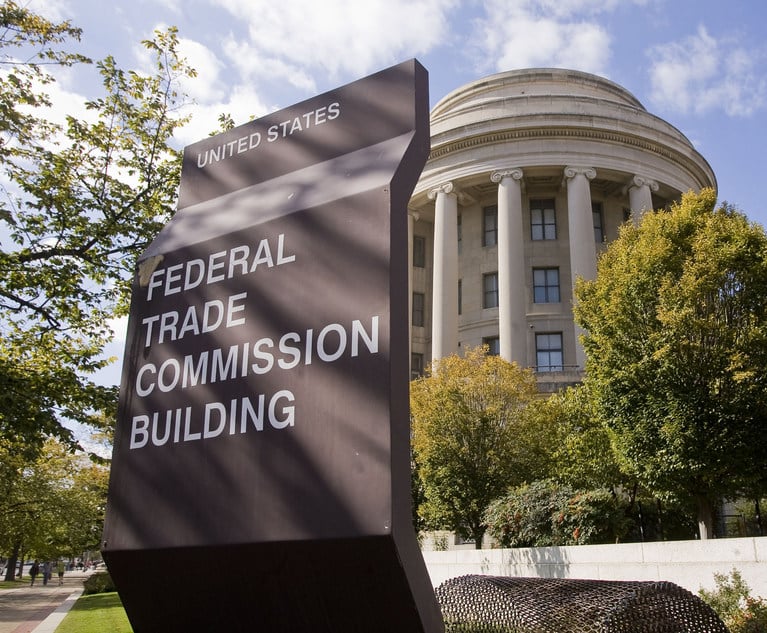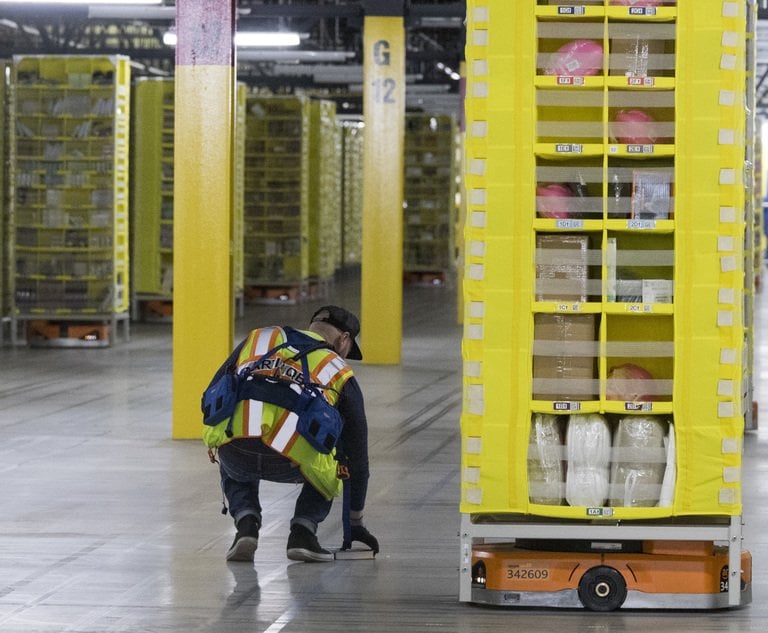Contributory Infringement Liability: An Increasingly Potent Weapon in the Arsenal of Apparel Manufacturers
In the last few years, copyright and trademark owners have slowly but surely gained traction in federal appellate courts by arguing that Internet service providers can bear responsibility for the infringing activities of those who use their services, if they have some knowledge of specific infringing conduct and fail to take simple measures to lessen the damage caused.
August 23, 2019 at 02:40 PM
8 minute read
 Photo: Daniel Krason via Shutterstock
Photo: Daniel Krason via Shutterstock
We are witnessing a crisis in the fashion world. Designers, manufacturers and retailers are watching their sales and margins plummet as unscrupulous Internet merchants steal their property. The Internet makes for a perfect storm, bringing together these virtually anonymous and largely overseas sellers of fake products with unsuspecting online consumers who believe they are buying genuine goods.
The ease with which counterfeiters can register a domain and inexpensively start online sales of knockoff goods is startling. For a few dollars, anyone can register a website, scour the Internet and steal the images of genuine products right from the websites of fashion designers and clothing retailers, and then use those stolen images to trick consumers into placing orders for what appear to be discounted genuine goods. Through this "bait and switch" scheme, the carefully built reputations of apparel makers are irretrievably harmed. Consumers come to think that they are just getting overcharged when they first visit the stores and websites of the apparel makers and their authorized retailers, and then quickly find what appear to be the same products for hundreds less on secondary sites and on popular marketplaces like Amazon and Taobao. And then when they do get the goods delivered to their door in UPS and DHL packages, their disappointment at seeing the inferior quality of the products only further deepens the damage to the reputations of the real apparel manufacturers. Because consumers think that they bought the genuine article, they blame the manufacturer for their misfortune. Fueled by the speed with which reviews can now get posted on social media and online platforms, this consumer backlash is devastating the fashion industry (and many other industries like consumer electronics and health care products which also feel the pain of illegal online activity).
Current Laws Are Outdated
Fortunately, the laws in the United States do provide remedies for designers and manufacturers, but unfortunately, those laws have become ill equipped to address the worldwide market for online counterfeits. Under federal copyright laws, the owners of apparel images can file an action in a U.S. District Court and seek the full panoply of remedies available to protect those registered images, such as an injunction, a seizure of goods and damages. Under federal and state trademark laws, the owners of trademarks can file an action in either a federal or state court and seek very similar remedies when their service marks and logos have been unlawfully used to sell infringing goods. But these laws were premised on a basic assumption that it is not an arduous task to actually find the culprit seller, find the goods and enforce a court's orders. They were written and last refined in a day and age when the Internet was an infant, and no one in Congress or state legislatures anticipated that it would be so easy to steal intellectual property and get away with it.
To appreciate just how simple and easy it is for these Internet pirates to get away with IP theft, consider the typical U.S.-based bridal gown manufacturer. Like all fine apparel makers, it must source the fabrics and make the garments overseas because of the scarcity of fine textiles and skilled labor in the United States. So it pays customs duties of 16-20% when it imports the gowns into the United States. And it invests hundreds of thousands—sometimes millions—of dollars before the gowns are actually made, in the artists who design those dresses, the models who wear them, the commercial photographers who execute the photo shoots, the travel to exotic places for those photo shoots, and the retailer infrastructure to sell them the way they were meant to be sold—with careful, personalized attention paid to the consumer.
The Internet counterfeiter bears none of those costs. It does not design anything. It takes the genuine gown and gives it to an overseas factory (usually in China) to duplicate using lower quality materials. It does not spend money on models, commercial photographers or travel. That is unnecessary because the counterfeiter simply trolls the Internet, locates the images from the genuine bridal maker's website and copies those images into its domain, which might be called something like www.beautifulbridalforyou.com. It designs its website to look "real", complete with a U.S.-based customer service number, return policies, privacy notices and "FAQ" sections which give it the look and feel of a safe website to an unsuspecting consumer. And when the consumer places her order online, the dress gets shipped into the United States without paying any customs duties, because it is sent as a single package, declared not as a commercial shipment but as a "gift", and listed at a value under the minimal threshold for duties. In that way, it escapes the scrutiny of U.S. Customs and lands on the doorstep of the consumer somewhere in the United States. This transaction is repeated thousands of times every day, each and every day, and so it is no small wonder why the online merchant can sell a cheap imitation so inexpensively.
The laws in this country do little to really protect genuine apparel manufacturers. Yes, they can file a lawsuit and try to find the seller, but the domains are registered under fictitious names and it is extraordinarily difficult to pierce that veil of anonymity. Yes, they can secure a sizable default judgment from a court (and they are usually defaults because none of the overseas domain owners dare to show up and defend themselves). But getting even a sizable default judgment is a Pyrrhic victory because it is impossible to actually collect on it unless the domain owner (assuming it can be found) is foolish enough to have assets in U.S. transaction platforms like PayPal. Those assets are more likely safe and sound in commercial banks in China. And yes, they can try to notify U.S. Customs of their rights, but U.S. Customs simply does not have the tools at its disposal to track and stop these single packages flowing into this country.
Contributory Infringement to the Rescue?
The simple truth is that legislative and regulatory change will be the best way of effectively addressing this crisis. Congress and state legislatures have thankfully taken steps to address the dangers of online child pornography and Internet drug sales. It is (hopefully) only a matter of time before they act to address the economic damage inflicted on the apparel industry (in ways other than the recently proposed tariffs, because tariffs only harm the genuine manufacturers and not the counterfeiters who pay no duties anyway). Those legislative wheels turn slowly, however, but there is some hope for the fashion world under existing law. Both copyright and trademark law have long provided a framework for the imposition of secondary infringement liability. So where the direct infringer cannot effectively be brought to answer for its illegal activity, those who provide a material contribution to that activity can be held just as responsible for the damage caused to the owner of intellectual property under theories of secondary liability, including contributory infringement.
The theory of contributory infringement is nothing new, but until recently it has not been a potent weapon in the arsenal of IP owners as they bid to shut down Internet counterfeiters.
In the last few years, however, copyright and trademark owners have slowly but surely gained traction in federal appellate courts by arguing that Internet service providers like Google, Amazon, Alibaba and Cloudflare can bear responsibility for the infringing activities of those who use their services, if they have some knowledge of specific infringing conduct and fail to take simple measures to lessen the damage caused. The ISPs had initially argued successfully that they should not be responsible for policing the Internet, and that any measures they do take cannot prevent the underlying infringement from continuing through other platforms. But those arguments are now starting to fall on deaf ears in the courts. The reality is that these sophisticated and well-heeled ISPs like Google and Cloudflare do possess the technology and therefore the means to take measures to lessen the damage caused to IP owners, and therefore they should take measures when they have some knowledge that their services are being misused. The tide is turning in the courts, and apparel manufacturers and designers would do well to sharpen their focus on these theories of secondary liability to combat Internet pirates.
In a closely watched case, two prominent designers of bridal gowns and prom dresses are accusing Cloudflare, the provider of a content delivery network to website owners around the globe, of contributing materially to the infringing activities of its website customers by making it faster and easier for consumers to view website content and purchase dresses sold using stolen images. That case, which is pending in a federal district court in San Francisco, will further test the limits of contributory liability of Internet service providers. It is deserving of the attention of the fashion world as designers and manufacturers fight to protect their intellectual property.
Craig Hilliard is partner with Stark & Stark and is chair of its intellectual property litigation group.
This content has been archived. It is available through our partners, LexisNexis® and Bloomberg Law.
To view this content, please continue to their sites.
Not a Lexis Subscriber?
Subscribe Now
Not a Bloomberg Law Subscriber?
Subscribe Now
NOT FOR REPRINT
© 2025 ALM Global, LLC, All Rights Reserved. Request academic re-use from www.copyright.com. All other uses, submit a request to [email protected]. For more information visit Asset & Logo Licensing.
You Might Like
View All

'Strong' Legal Theory or 'Oxymoron'? Experts Eye FTC Antitrust Suit Against Mattress Merger
5 minute read

Manhattan Federal Judge Allows Breach of Fiduciary Duty Claim to Move Ahead Against Amazon
Trending Stories
- 1Public Notices/Calendars
- 2Wednesday Newspaper
- 3Decision of the Day: Qui Tam Relators Do Not Plausibly Claim Firm Avoided Tax Obligations Through Visa Applications, Circuit Finds
- 4Judicial Ethics Opinion 24-116
- 5Big Law Firms Sheppard Mullin, Morgan Lewis and Baker Botts Add Partners in Houston
Who Got The Work
J. Brugh Lower of Gibbons has entered an appearance for industrial equipment supplier Devco Corporation in a pending trademark infringement lawsuit. The suit, accusing the defendant of selling knock-off Graco products, was filed Dec. 18 in New Jersey District Court by Rivkin Radler on behalf of Graco Inc. and Graco Minnesota. The case, assigned to U.S. District Judge Zahid N. Quraishi, is 3:24-cv-11294, Graco Inc. et al v. Devco Corporation.
Who Got The Work
Rebecca Maller-Stein and Kent A. Yalowitz of Arnold & Porter Kaye Scholer have entered their appearances for Hanaco Venture Capital and its executives, Lior Prosor and David Frankel, in a pending securities lawsuit. The action, filed on Dec. 24 in New York Southern District Court by Zell, Aron & Co. on behalf of Goldeneye Advisors, accuses the defendants of negligently and fraudulently managing the plaintiff's $1 million investment. The case, assigned to U.S. District Judge Vernon S. Broderick, is 1:24-cv-09918, Goldeneye Advisors, LLC v. Hanaco Venture Capital, Ltd. et al.
Who Got The Work
Attorneys from A&O Shearman has stepped in as defense counsel for Toronto-Dominion Bank and other defendants in a pending securities class action. The suit, filed Dec. 11 in New York Southern District Court by Bleichmar Fonti & Auld, accuses the defendants of concealing the bank's 'pervasive' deficiencies in regards to its compliance with the Bank Secrecy Act and the quality of its anti-money laundering controls. The case, assigned to U.S. District Judge Arun Subramanian, is 1:24-cv-09445, Gonzalez v. The Toronto-Dominion Bank et al.
Who Got The Work
Crown Castle International, a Pennsylvania company providing shared communications infrastructure, has turned to Luke D. Wolf of Gordon Rees Scully Mansukhani to fend off a pending breach-of-contract lawsuit. The court action, filed Nov. 25 in Michigan Eastern District Court by Hooper Hathaway PC on behalf of The Town Residences LLC, accuses Crown Castle of failing to transfer approximately $30,000 in utility payments from T-Mobile in breach of a roof-top lease and assignment agreement. The case, assigned to U.S. District Judge Susan K. Declercq, is 2:24-cv-13131, The Town Residences LLC v. T-Mobile US, Inc. et al.
Who Got The Work
Wilfred P. Coronato and Daniel M. Schwartz of McCarter & English have stepped in as defense counsel to Electrolux Home Products Inc. in a pending product liability lawsuit. The court action, filed Nov. 26 in New York Eastern District Court by Poulos Lopiccolo PC and Nagel Rice LLP on behalf of David Stern, alleges that the defendant's refrigerators’ drawers and shelving repeatedly break and fall apart within months after purchase. The case, assigned to U.S. District Judge Joan M. Azrack, is 2:24-cv-08204, Stern v. Electrolux Home Products, Inc.
Featured Firms
Law Offices of Gary Martin Hays & Associates, P.C.
(470) 294-1674
Law Offices of Mark E. Salomone
(857) 444-6468
Smith & Hassler
(713) 739-1250






